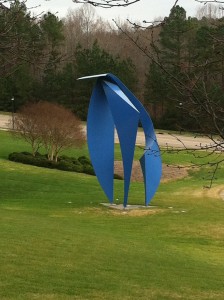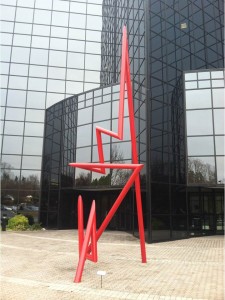Being named to the Top 100 of the Fortune Best Places to Work list is a highly coveted honor that SAS has enjoyed for 16 years in a row. In order to be considered for this annual ranking, candidate companies have to answer a comprehensive set of questions that really set a high bar. It is a proud achievement that SAS has been in the top 3 of this list for the past 3 years in a row, making #1 in both 2010 and 2011, and once again we showed up on the list as #2. As an employee of SAS, I can confirm it is indeed a great place to work. Done.
As a marketer, however, I thought it would be interesting to consider what the business value of that ranking might be for SAS. Here are two possible approaches:
The measure-and-prove approach

If shares of SAS stock were traded publicly, we could take cues from our fascinating friends in accounting and compare the book value of the company's total assets to the market value of the company and attribute some portion of the difference to the ranking. But alas, SAS is a privately held company. Even if we could rely on stock market data, we'd have to isolate the effect of the announcement without any other market factor - not a task for me to tackle.
To further complicate matters, only one company on the top 3 of the list the last 3 years has publicly traded shares - Google. With a market capitalization of over $200 billion, the closing stock price for GOOG on the day of the announcement vs. the previous day for the last few years did not always rise - up $6.66 in 2012, down $4.98 in 2011 and up $2.57 in 2010. Aagh - so much for that approach!
Before we dig any deeper, I think it’s important to note that SAS's high ranking is based on factors that have been inherently a part of our culture since our founding in 1976.

SAS is a company that describes its employees as its most important asset, and then has innumerable policies backing up that lofty claim. So how do you put a pricetag on treating your employees decently?
Well, consider how you might personally value working in a walled office versus a cubicle. How about access to on-site daycare and primary health care? Or beautiful artwork gracing your work surroundings? They're all priceless, of course. Then multiply that by over 13,000 employees worldwide and you start to get an order of magnitude of the value behind how SAS is ranked on Fortune's Best Places to Work list.
Given that it's a matter of culture, then we can point to the metrics of our people policies cited in our latest annual report and the financial success we attribute to creating and maintaining such a strong working environment:
- SAS focuses on hiring great talent and invests heavily in R&D. In 2011, our staff grew 9.2 percent, and we reinvested 24 percent of our revenue into R&D.
- With an average employee tenure of 10 years, SAS experiences an average voluntary employee turnover of a mere 5 percent in an industry where 22 percent is the norm.
- 2011 was another record year for us – our 36th consecutive year of growth and profitability - with worldwide revenue reaching US$2.725 billion, a 12 percent increase over 2010.
- In 2012, a survey of SAS customers showed that 92 percent of customers were likely to recommend SAS for renewal, and 88 percent were likely to be a customer in five years.
I guess it's all relative - given those metrics and results, what would it be worth to to your organization to have low employee turnover and high customer retention rates? Really, it's priceless. That's the business value of being a best place to work.
What do you think?

3 Comments
Happy employees take good care of customers - and happy customers not only keep buying, but they tell other people how great you are! How much marketing budget would that take????
Hi Elizabeth,
Thanks for your comment and your budget question is one that all business leaders can contemplate. Think of it as karma or think of it as the old adage, "you reap what you sow," but keeping employees happy is certainly the way to go. (unintended rhyme, but I'll keep it!)
:) JB
Pingback: Feeling valued … that’s the SAS culture